Game Prototypes
Game prototypes that didn’t make it into a full game yet. All recent ones written in Lobster. These are the more interesting looking ones, I left out all the dozens that are just a few lines on a screen :)
Settlement (2017)
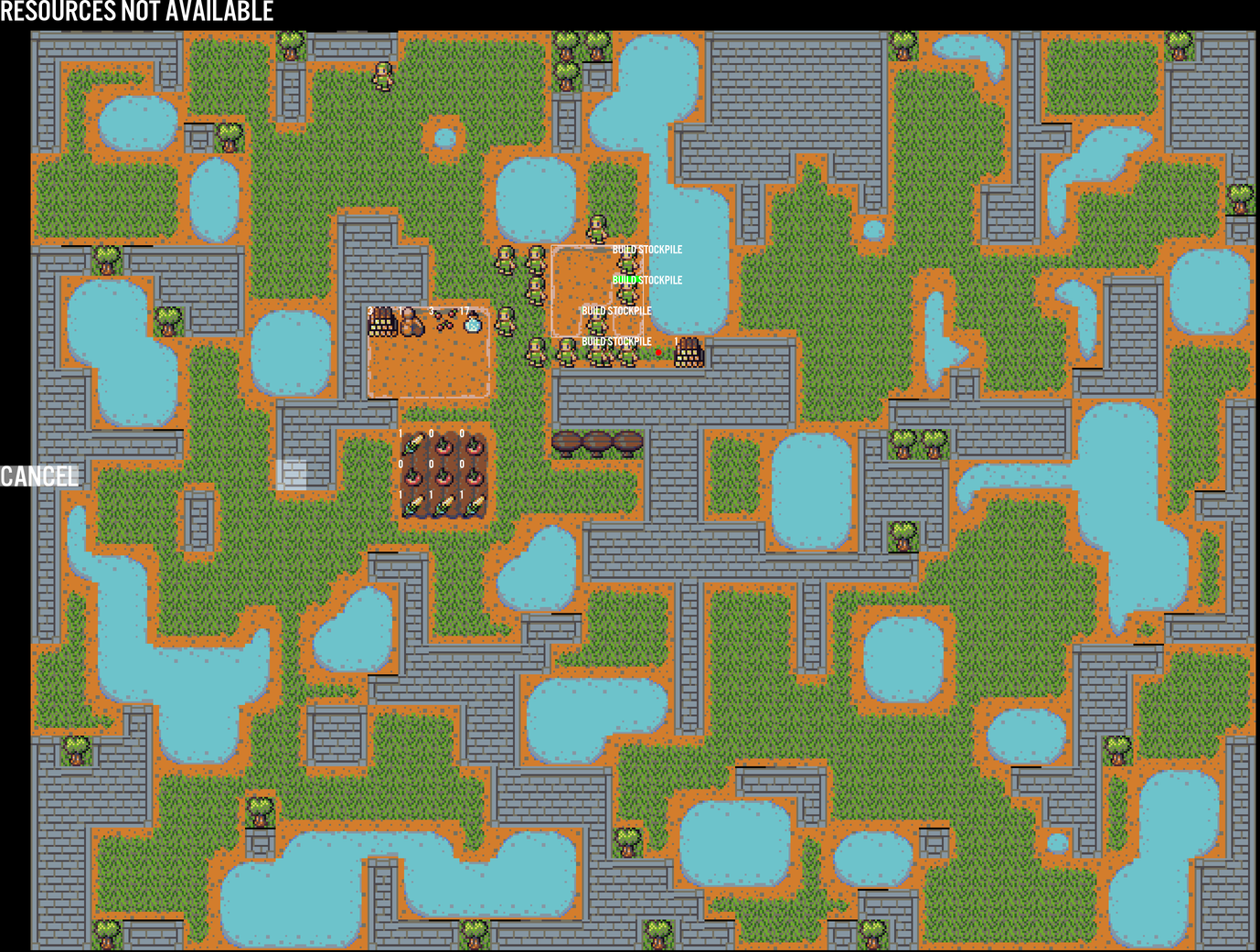
Since most existing settlement simulators (e.g. Rimworld) annoy me with their settler & task micro-management, this one is all about a different kind of UI where you first select where you want to do something, and then the game gives you a list of things you can actually do there. It then assigns settlers for the task automatically, who do all task in strict order of assignment.
Blueprint RTS (2016)
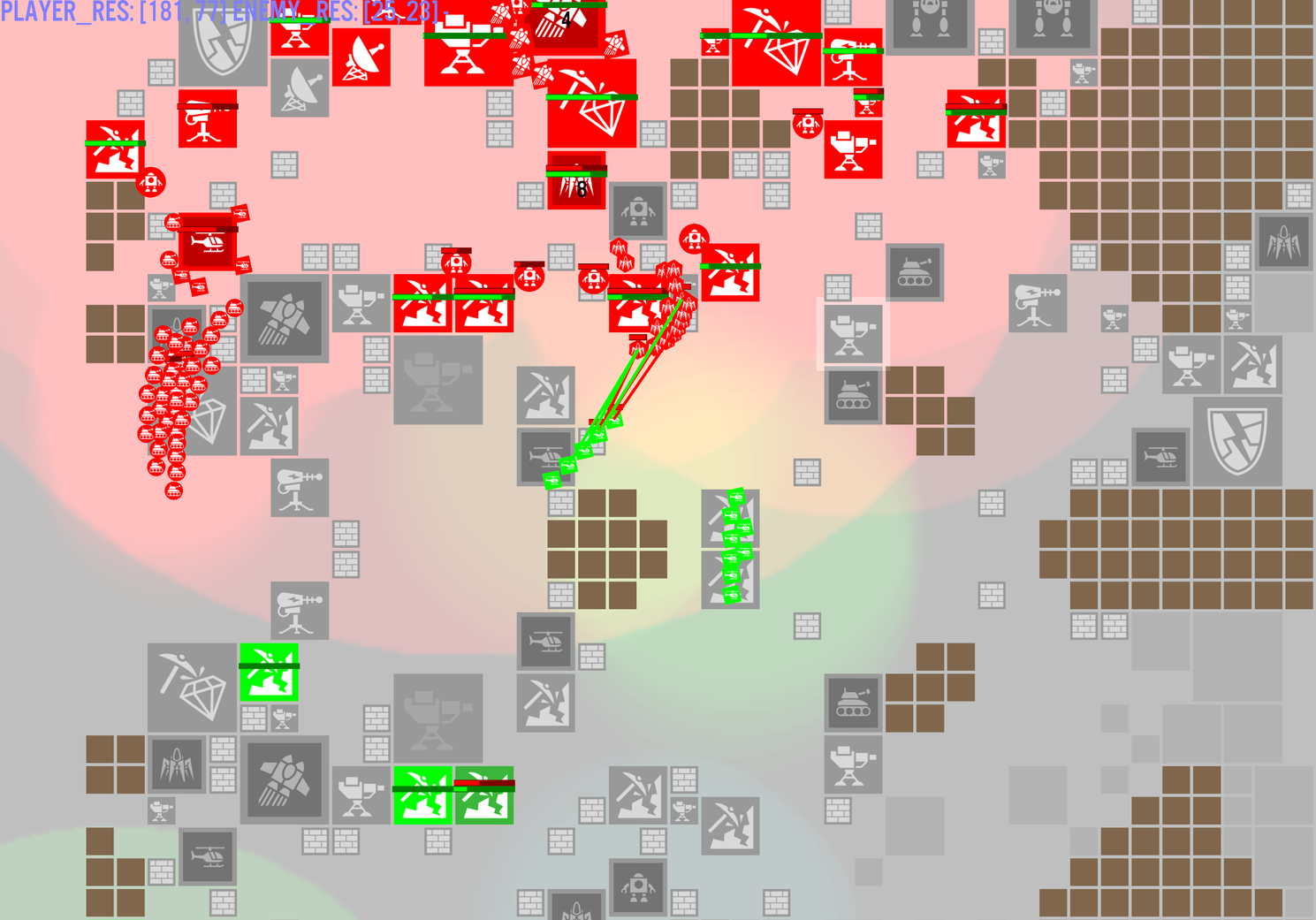
An RTS game that only allows you to build pre-existing building choices on given sites. On the one this simplifies the UI tremendously (just click to build, no build menus needed), and on the other hand it forces you to make more interesting choices since your ideal build order may not be possible (you’re forced to improvise).
Trafficsim (2015)
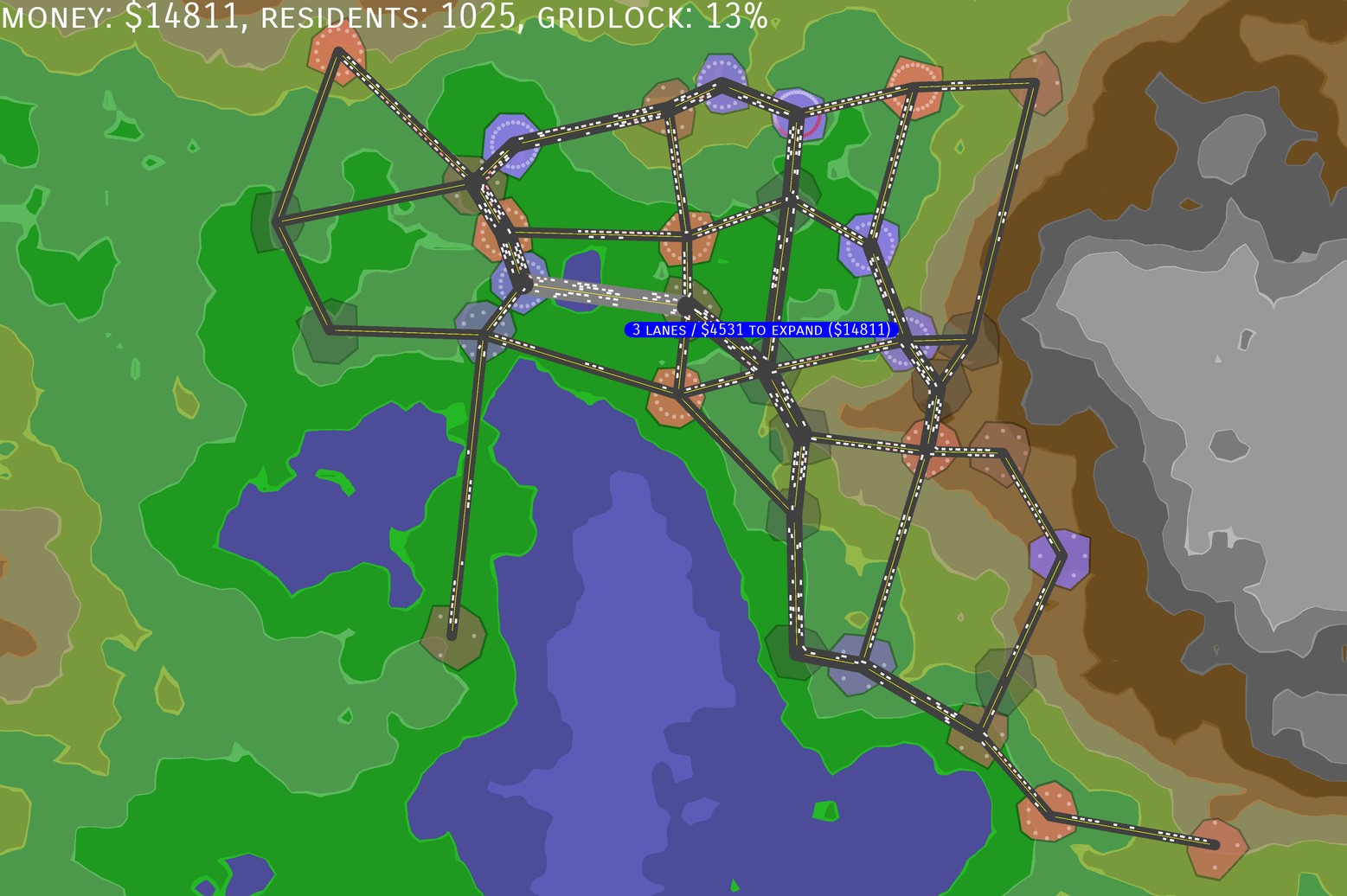
The game simulates cars driving to work and back, where each car adapts it speed depending on traffic. Cars reaching their destination give the player money, which they can invest in making the roads wider (add lanes). Your objective is thus to choose wisely where to improve traffic-flow, as often adding lanes in one place just moves the bottleneck elsewhere. New cars are added all the time, and you lose if 75% of the map is gridlocked.
Shrink RPG (2014)
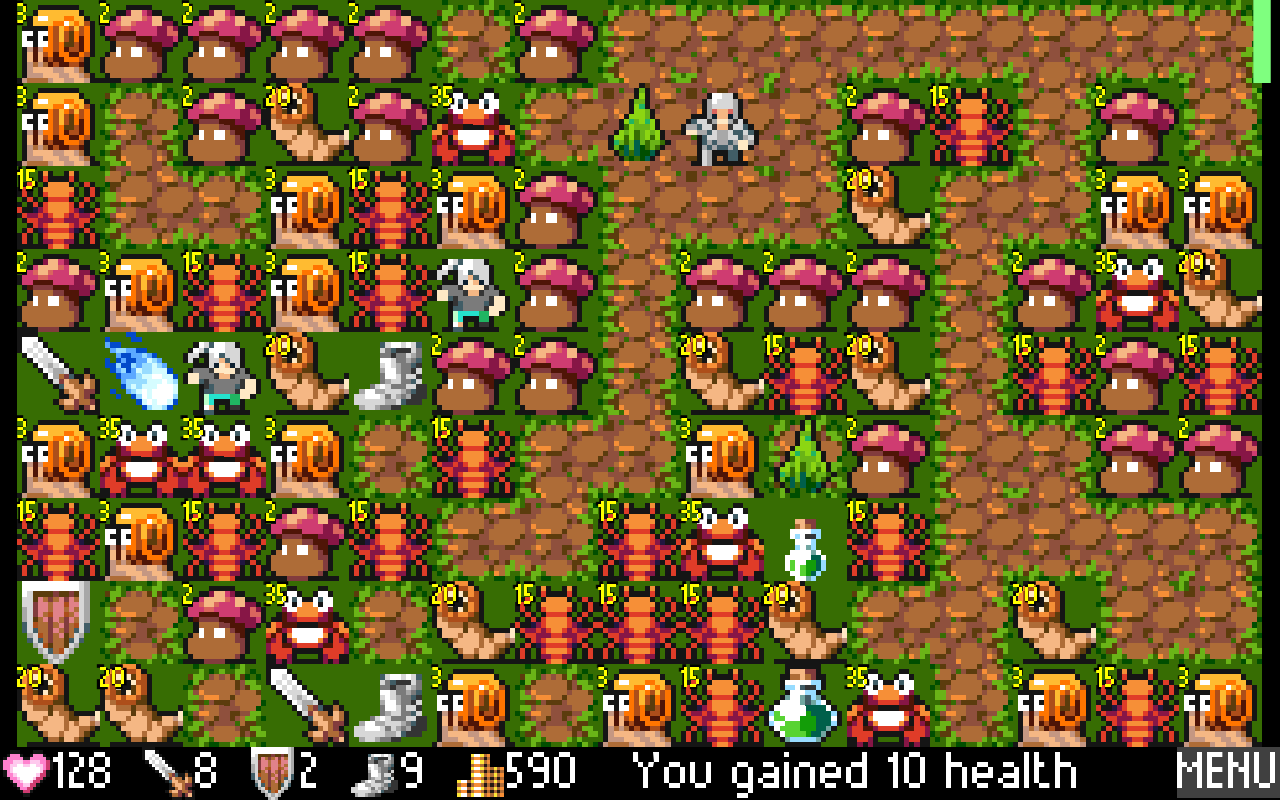
This is a further simplification of my game Avoid The Monsters, inspired by Tower of the Sorcerer style games. Randomly generated, and rather than progressing to a next level, this level “shrinks” as soon as you clear an entirely row or column.

Same idea, but this time just progressing to right indefinitely.
Tap Defense (2013)
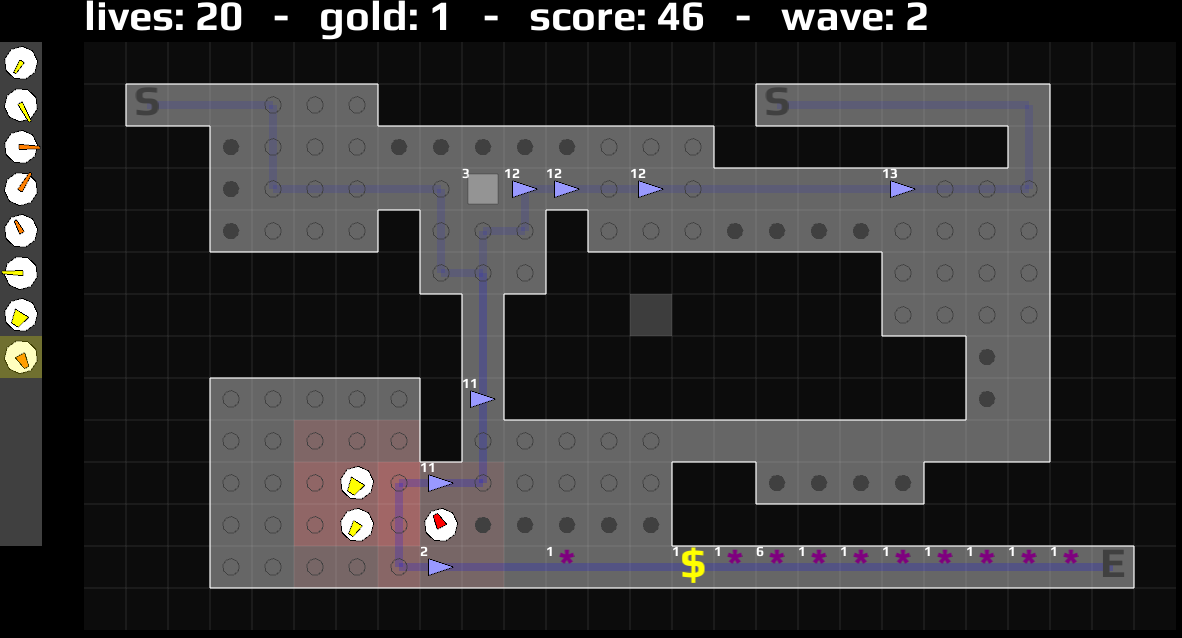
A roguelike tower defense game. Roguelike in the sense of “each player action causes the world to progress by one step”. Here, one step simply means enemies move one step along the path. Player actions are tapping on an enemy to have all towers within range fire at it, tapping on an area-effect tower to trigger it, tapping on the path to lay a mine, tapping on money (dropped by dead enemies) to collect it, tapping on an empty spot to build a new tower, etc. Towers are graphically shown to reflect their hitpoints and range. You build new towers from “cards” you draw as opposed to all kinds of towers being available.
Exit Strategy (2013)
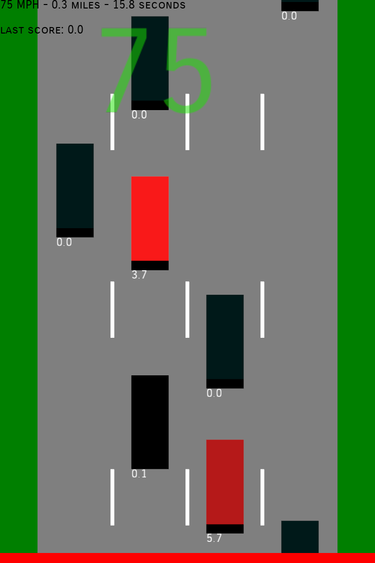
Another game inspired by my driving habits when stuck in traffic, this game simulates cars with different speeds and behaviors, with your job to try and get through traffic as fast as possible. Cars change lanes, and slam on their brakes as they come up on someone elses bumper. Cutting cars off is a good strategy :)
roguelike framework (2008)
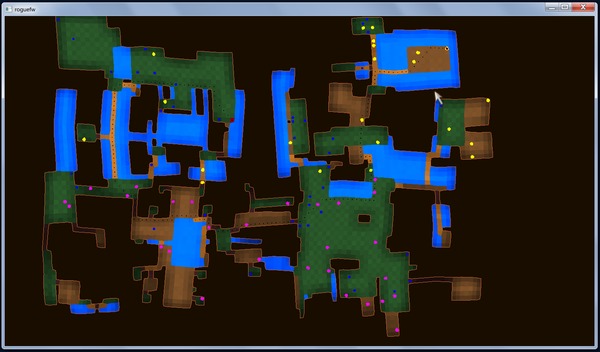

A “framework”, because I wanted to be experimenting with a variety of things
- easy ways to control teams in a roguelike fashion. Here you can control groups much like in an RTS, with the difference that the group orders get executed in lock step with the manual movement of your main player character. Functionality for group formations and such.
- more interesting random levels: for some reason most roguelikes put enormous effort into items and actions, yet no effort into making worlds a bit more memorable. Here I employ limited amounts of symmetry and repetition to give the impression of more man-made structures. Open grass areas combine with dungeons, watery areas and bridges.
- Making a grid based world look less grid like, by putting all cells on a spring-damper system to allow them to bend out of shape a little, and move verts to give a more organic impression (idea stolen from Dungeon Keeper).
I put the prototype here (win32), read the readme on how to control it, note it is NOT a game, is very unfinished, and has bugs.
sphere racer (2005)
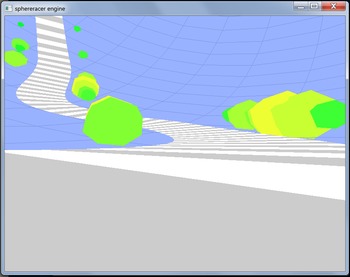
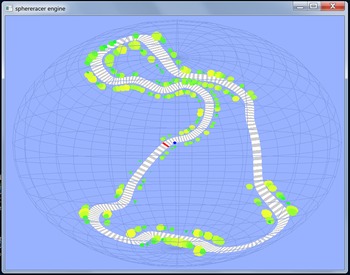
Racing games always have this problem that planning your speed through a curve is difficult because you can’t see where you are going.. which is why they are only fully fun once you have learned the track layout. Minimaps are useless because trying to race while looking at it is not giving you enough precision. Here I was attempting to solve that by laying out the track on the inside of a sphere, which has the effect as if you are driving thru an endless valley towards a hill, so you can easily see where the road ahead is going. Unlike a real hill, the effect never ends, allowing you to effectively plan corners you have never taken before.
The prototype comes with a track editor/loading/saving, and some driving physics.
procedural rts (2006)
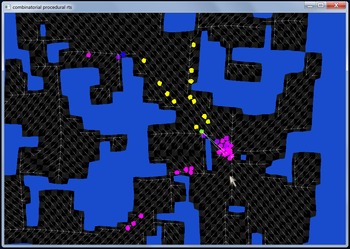
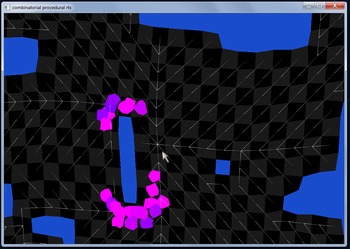
The beginnings of an RTS, aimed at “procedural gameplay” (allowing players to design their own units on the fly with different statistics), unit flocking etc.
non-grid roguelike shooter (2007)
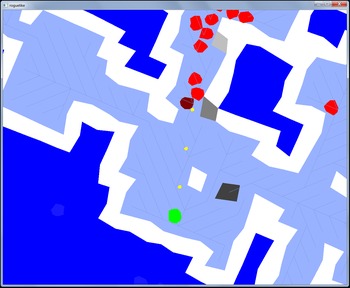
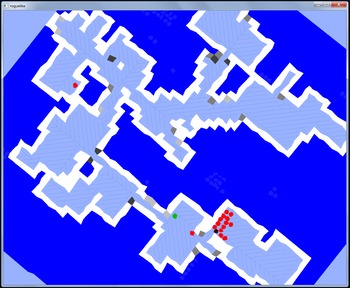
Here the idea is to combine a top down shooter (in a FPS sense, i.e. WASD + mouse, not geometry wars style) with roguelike mechanics (the game pauses the moment you stop moving/shooting, allowing you to take your time to figure out optimal tactics to defeat enemies, select powerups, place helpers in the world, etc.)
Addendum: There’s now a 3D game out that uses this mechanic, which works amazingly well, especially in VR: SuperHOT.
sample RL (2010)
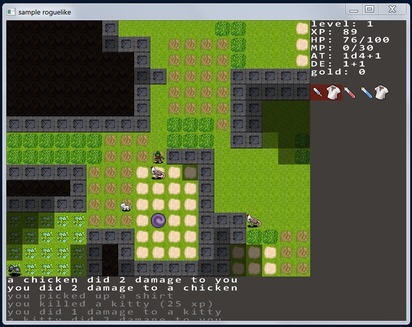
Another roguelike, this time with emphasis on keeping things utterly simple to implement, as it meant to be a basis for an intro to game programming. Unlike the above RLs, actually has a good variety to enemies, items, and game balance that make it fun to play.
Etc.
- More graphics / engine experiments.
- game design ideas / documents.
- Back to my Games, Engines, Editors & Maps page.